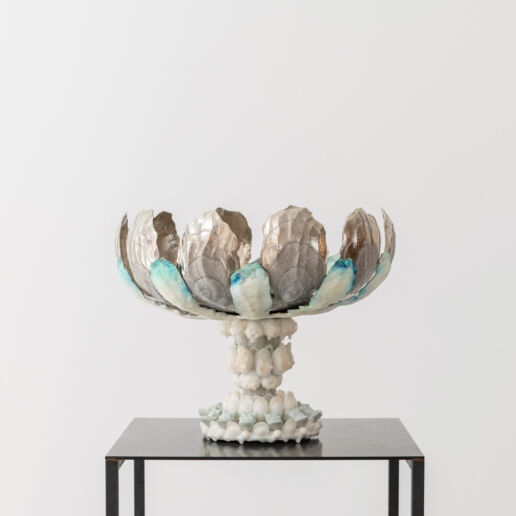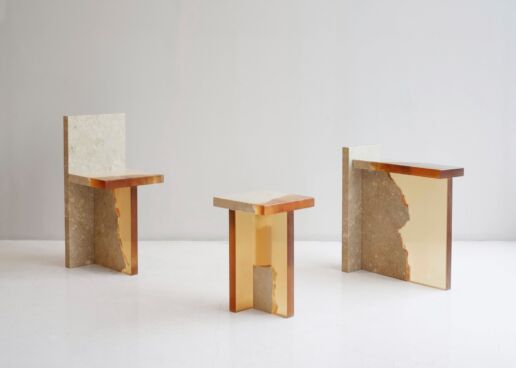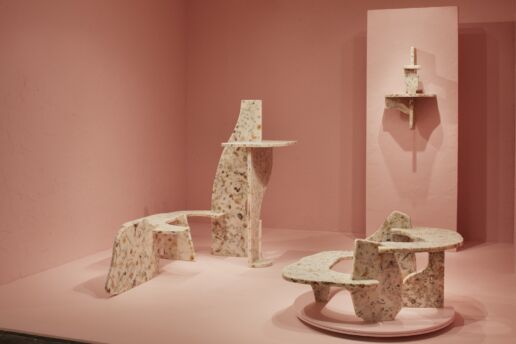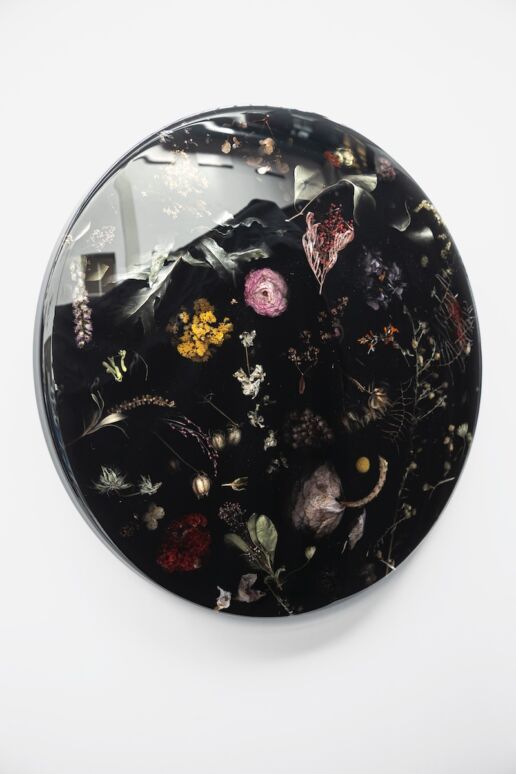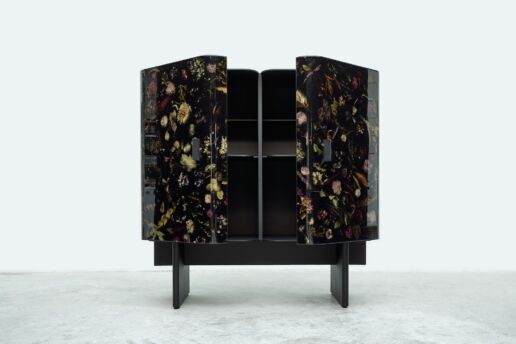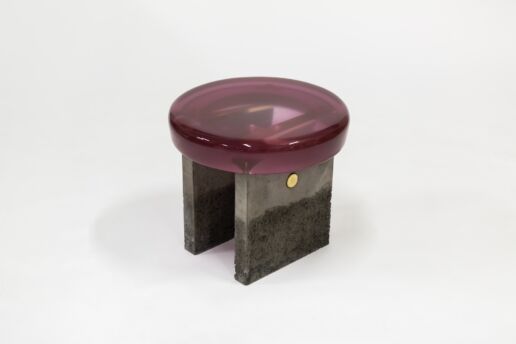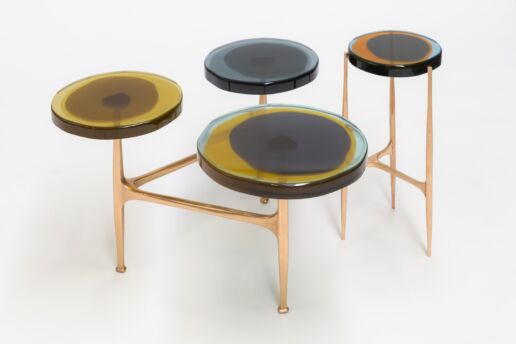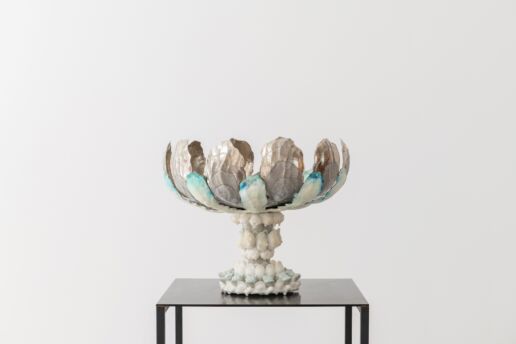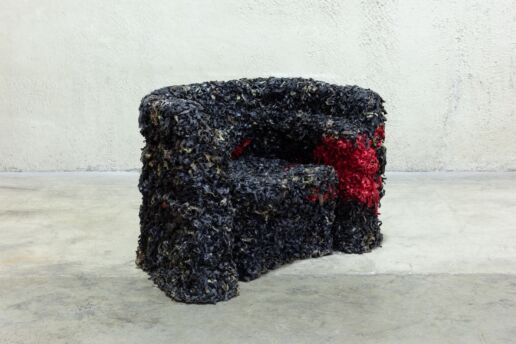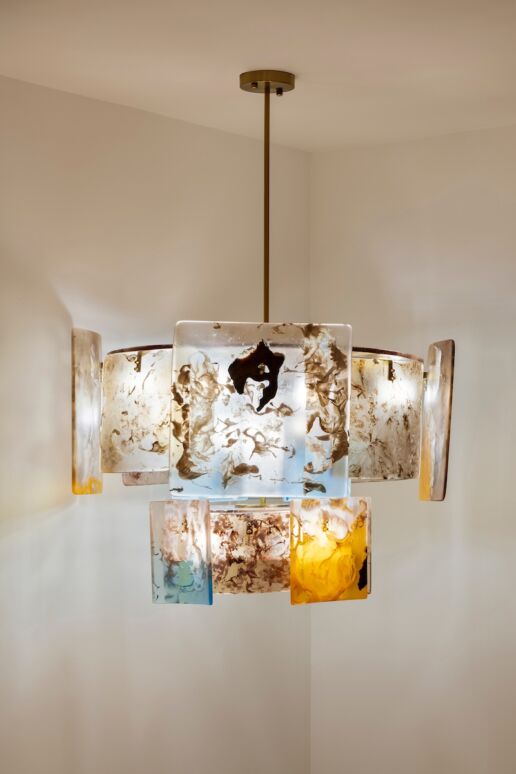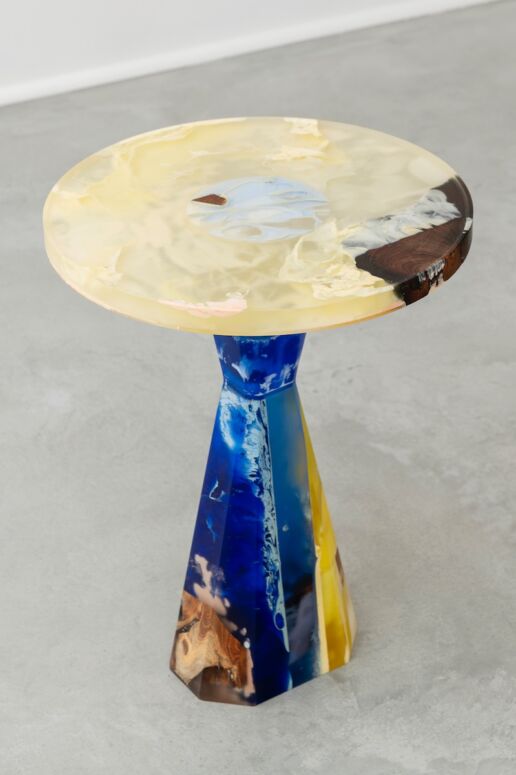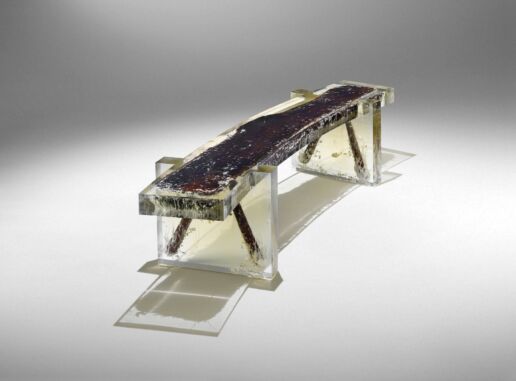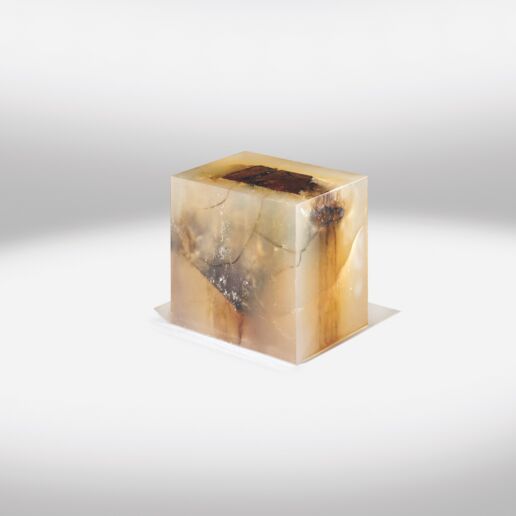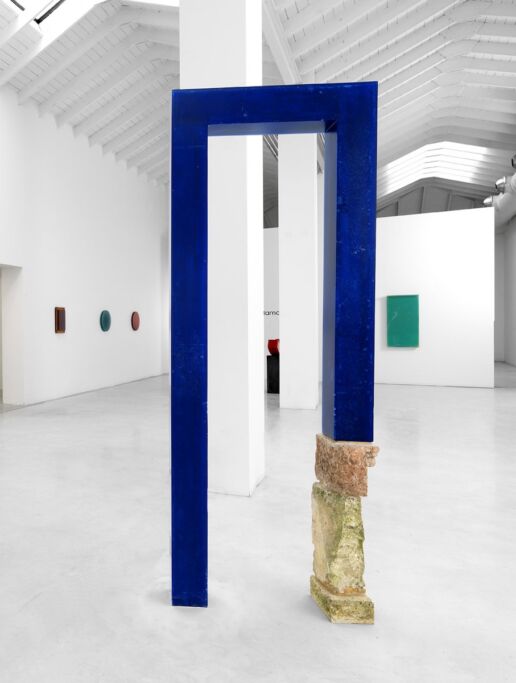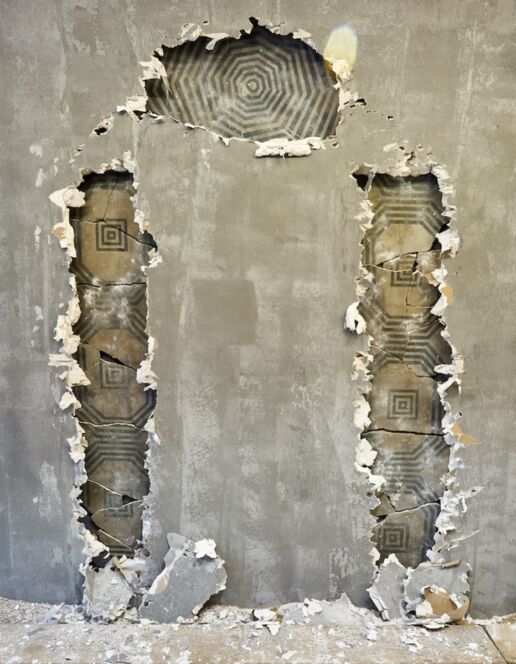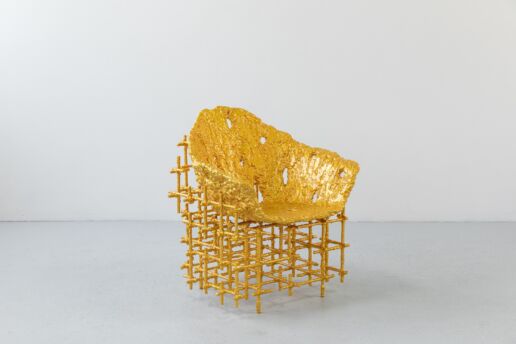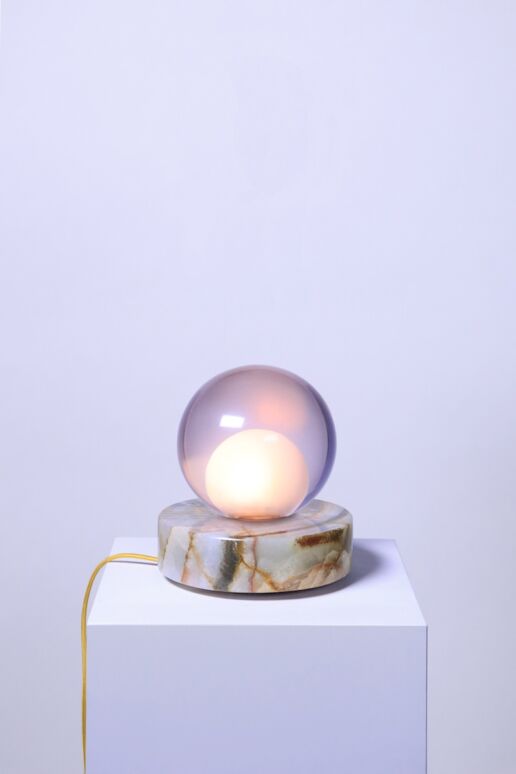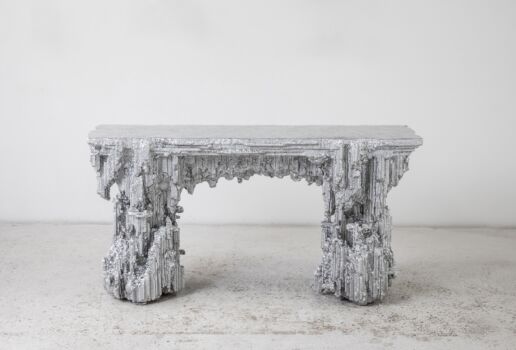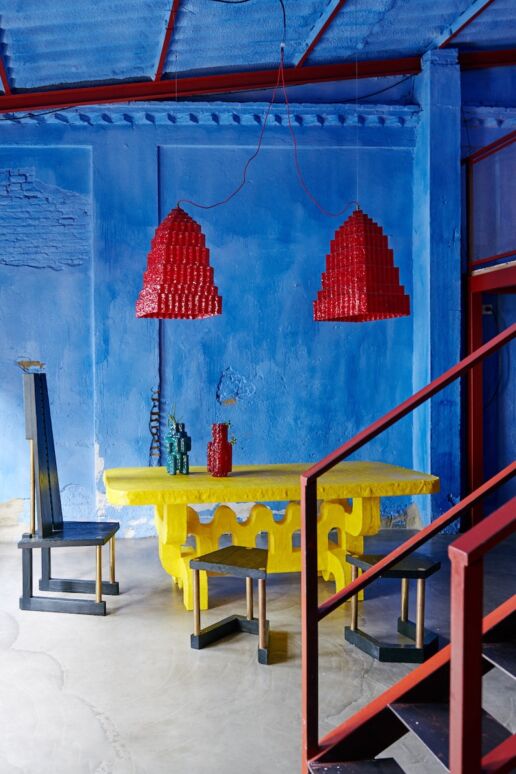THE MANY FACES OF RESIN
Taking unique forms reminiscent of creamy ice cream or deep-sea creatures, resin is one of the most beautiful mediums for abstract expression, offering fluidity that can be shaped.
The truth behind resin
A sticky and semi-transparent material also known as Greek pitch, natural resin has been used for centuries. The miraculous transformation of resin – extracted from conifers and turned into chairs, coffee tables or jewellery – involves a tedious production process. As a soluble and combustible organic material, resin is magical: You may sit down to design a piece of furniture in resin but find yourself creating a sculpture instead. It is almost as if its form supersedes its function.
The more I read about resin, the more inspiring I found the material to be. I felt compelled to dig deeper into the subject when I discovered how versatile it can be, from its role in covering up imperfections to blending in perfectly with imperfect forms.
From resin to amber
The most precious form of resin is amber, a fossilised form of tree sap and the hardest form of resin, valued for its natural beauty since the Stone Age. Amber remains popular in jewellery making, with amber rosaries and rings fetching extremely high bids at auction houses.
I came across the most spectacular necklace at a Christie’s auction long ago. Each of the 40-million-year-old amber stones in this necklace contain prehistoric insects such as mosquitoes, ants and spiders. Amber is also carved intoanimal motifs and decorative objects that take various amorphous shapes.
There is also a synthetic variety of this sticky and semi-fluid material. It is made from a mixture of oil, natural resin and chemicals to create an end product that is indistinguishable from plastic after it solidifies. Depending on the amount of pigment added, amber can run the spectrum from opaque to crystal clear. Nowadays, this epoxy resin has become the most popular material used in art, design and DIY projects.
Designs with resin
Now approaching 82 years of age, Gaetano Pesce is probably one of the most famous resin artists of the 20th century. The Italian architect, represented by the Friedman Benda gallery in Los Angeles, is known for mastering the art of using the most unexpected materials. His timeless resin moulds, vases, chairs and lamps deserve a closer look. Skipping two generations, Polish artist and industrial designer Marcin Rusak (b. 1987) comes from a family of florists and employs a special technique that submerges plants in fresh liquid resin to make custom furniture
London-based Gallery Fumi has a considerable collection of designs containing resin. One artist featured by the gallery is Chinese-born designer Jie Wu who gives new life to old forms by using rosewood, resin and lacquer. Wu regards resin as an almost noble material. She believes its beauty could turn objects made from it into luxury, legacy objects akin in value as those made with, say, marble.
Italy offers some of the most interesting designs when it comes to combining concrete and resin. Draga & Aurel Design Studio in Como uses a combination of solid concrete and glossy resin to highlight contrasts between the two materials: the coarse, cumbersome opacity of the concrete joined with the transparency and refraction of resin.
In 2019, interior designer Enis Karavil used concrete and resin to transform a gallery space into a construction site for Hasan Pehlevan’s exhibition Memor(y)ial Destruction at Pg Art Gallery.
Upcoming South Korean artist Jang Hea Kyoung says she went through an experimental process while combining marble and resin as elegantly as possible to create one-offs and unique pieces of furniture influenced, in part, by her training as an industrial designer.
As contemporary architecture pioneer Ludwig Mies van der Rohe once said, ‘Each material has its specific characteristics, which we must understand if we want to use it. This is no less true of steel and concrete.’
Resin is used to create unique designs in both natural and synthetic forms. Increasingly, designers, artists and consumers have grown to consider these pieces to be modern heirlooms. This means that, because of its beauty and versatility, synthetic resin is probably the only plastic that is immune to criticism for its lack of sustainability.
Read More on #Sanayi313Paper


